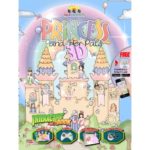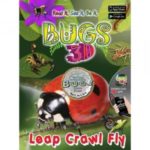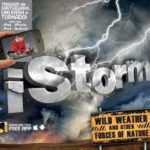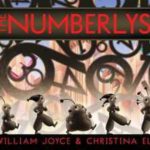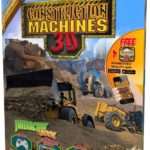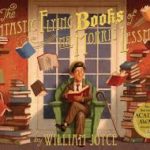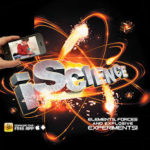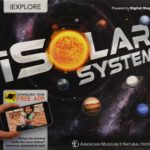What is Virtual Reality?
Virtual Reality (VR) immerses users completely into an artificial world.
VR uses technology to create the illusion of presence in an environment that isn’t really there. It can be used to help students better understand a concept that is being studied (e.g., space), by allowing them to experience that environment firsthand. VR can be used through a traditional desktop computer or through a fully immersive practice that requires the student to wear a head mounted display. It offers the student a unique learning experience that they cannot get from looking at a textbook – instead of reading about space, why not put the student there?
There are many different types of VR systems but they all share the same characteristics such as the ability to allow the person to view three-dimensional images. These images appear life-sized to the person.
Getting Started with Virtual Reality:
CoSpaces EDU is a web-based platform for the creation of virtual and augmented reality 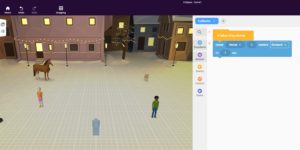 experiences. With a library of basic assets (e.g., people, animals, etc.), users can easily drag-and-drop objects into the visual experience editor. CoSpaces provides a variety of graphical backgrounds to build from, or you can upload your own 360º photographs to use as the setting for your experience. Want to take it a step further? CoSpaces also has a coding space so you can create a truly immersive and interactive experience through block coding or JavaScript (pro version only). The basic version of CoSpaces EDU is free to try out, but if you’re craving a bit more, try out the 30-day trial of their pro version!
experiences. With a library of basic assets (e.g., people, animals, etc.), users can easily drag-and-drop objects into the visual experience editor. CoSpaces provides a variety of graphical backgrounds to build from, or you can upload your own 360º photographs to use as the setting for your experience. Want to take it a step further? CoSpaces also has a coding space so you can create a truly immersive and interactive experience through block coding or JavaScript (pro version only). The basic version of CoSpaces EDU is free to try out, but if you’re craving a bit more, try out the 30-day trial of their pro version!
If you need a little help to get started, check out the CoSpaces Edu curriculum & activity guide curated by STEAM-3D Maker Lab intern Jenny Cherrington:
Google Tour Creator is another powerful online tool for creating VR experiences! In this 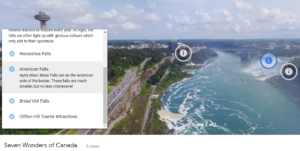 platform, you can upload a 360º photo (or select a pre-existing photosphere from Google Maps) and add your own annotations in the form of text, images, and audio. Better yet, you can link multiple 360º photos together to make a full-blown tour, complete with background audio to guide your virtual tourist. When your Tour is complete, you can view the finished project in your computer’s web browser, or send the link to your smartphone so you can view it through a VR headset. Still curious? Check out the Tech Tool Tuesday post we wrote on Google Tour Creator!
platform, you can upload a 360º photo (or select a pre-existing photosphere from Google Maps) and add your own annotations in the form of text, images, and audio. Better yet, you can link multiple 360º photos together to make a full-blown tour, complete with background audio to guide your virtual tourist. When your Tour is complete, you can view the finished project in your computer’s web browser, or send the link to your smartphone so you can view it through a VR headset. Still curious? Check out the Tech Tool Tuesday post we wrote on Google Tour Creator!
For even more resources, information, and suggestions, check out former Maker Lab team member Melanie Maas’ VR website.
What is Augmented Reality?
Augmented Reality (AR) allows virtual objects to be superimposed onto the real world.
AR is the blending of virtual reality and life. Users are able to interact with virtual content while remaining visually present in the real world, and are able to easily distinguish between the two. Educators can use augmented reality to create layers of digital information on top of the physical world that can be viewed through a digital device. Like VR, AR can be used in multiple environments. Rather than just looking at a textbook, or watching a video, students can see the topic come to life in the form of a 3D model. AR can be planned into a lesson, but can also be employed around the classroom in ways that students can access when needed (e.g., an augmented word wall or photo wall). Students are more likely to understand a concept, rather than just memorize, when their minds are being stimulated in multiple ways. AR provides an opportunity for educators and students to share in a learning experience that steps away from the traditional pen and paper and into a more technologically engaging experience.
Getting Started with Augmented Reality
In addition to virtual reality, CoSpaces EDU also allows for the creation of AR experiences! Using the CoSpaces app for your smartphone or device, you can view your story, game, or other creation overtop of your real-world environment. If you have a Merge cube, you can even use CoSpaces EDU to create AR experiences that you can hold in your hand (pro version only)!
There are a variety of AR apps you can try from the comfort of your own home:
- The Quiver app works in conjunction with special colouring pages that can be downloaded and printed from its website, combining real-world creativity with AR technology!
- If you have an Apple smartphone, check out GeoGebra AR for real-world mathematics and science learning through augmented reality. Check out the Tech Tool Tuesday post we wrote about it here!
- The Star Walk app (on Google Play or iTunes) uses AR to superimpose constellations and other celestial features onto your physical world.
The following books have an AR companion app, bringing life to your educational or recreational reading:
- “Princess and her Pals 3D” from Popar Books
- “Bugs 3D” from Popar Books
- “iStorm” from Carlton Books
- “The Numberlys” by William Joyce
- “Construction Machines 3D” from Popar Books
- “The Fantastic Flying Books of Mr. Morris Lessmore” by William Joyce
- “iDinosaur” from Carlton Books
- “iScience” from Carlton Books
- “iSolar System” from Carlton Books
For more information, suggestions, and resources, visit former Maker Lab team member Melanie Maas’ AR website.
Learning Benefits of AR & VR
The benefits of learning through VR, AR, and MR include:
- Increased content understanding of spatial structure and function
- Learning of language associations
- Long-term memory retention
- Improved physical task performance
- Increased motivation and engagement, and more!
Curriculum Connections
Not sure where augmented or virtual reality fit into your classroom? Check our list of Ontario curriculum connections for AR or VR inspiration!

